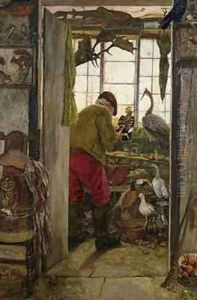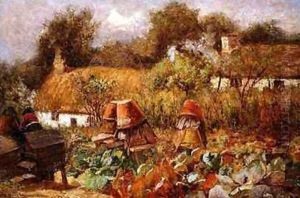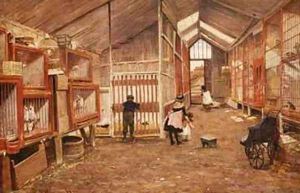John Houghton Hague Paintings
John Houghton Hague was a 19th-century British artist known for his landscape paintings and architectural works. Born in 1829 in Wakefield, Yorkshire, England, Hague developed his skills as an artist from a young age. Despite the lack of extensive documentation on his early life and training, it is known that Hague began exhibiting his works in the 1850s, which suggests that he received a level of formal training or was part of an artist's circle that helped him develop his craft.
Throughout his career, Hague specialized in watercolors and oils, capturing the beauty of the British countryside as well as producing a number of works featuring architectural subjects. His style was typical of the Victorian era, with a focus on realism and detailed representation. Hague's work was well-received in his time, and he gained recognition for his technical skill and his ability to portray the atmosphere and mood of a scene.
Hague was an active member of the art community and exhibited at prestigious institutions including the Royal Academy, the British Institution, and the Royal Society of British Artists. His works were collected by art enthusiasts and were popular among the Victorian middle class, who appreciated his depictions of the British landscape and heritage.
John Houghton Hague passed away in 1904, leaving behind a legacy of artworks that continue to be appreciated for their historical value and artistry. His paintings can be found in various art galleries and private collections, contributing to the understanding of British landscape and architectural painting during the Victorian era.


